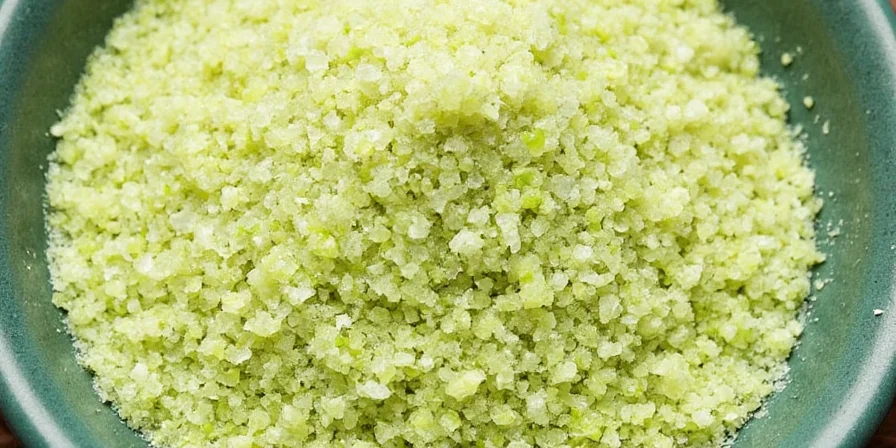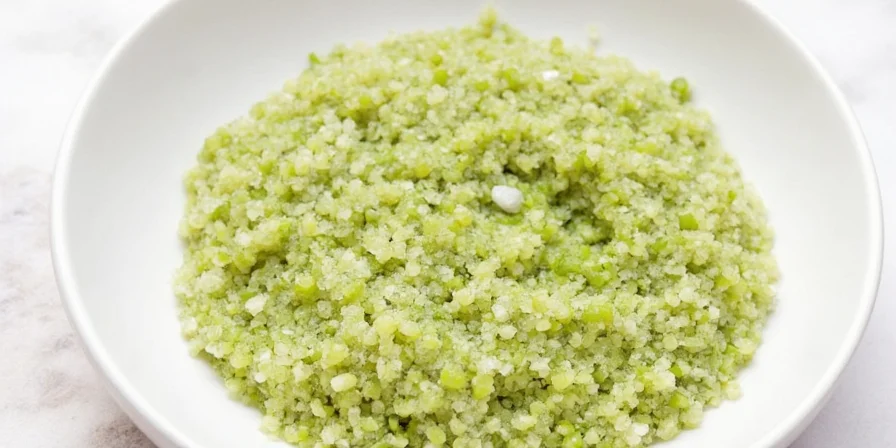Celery salt is a versatile seasoning blend made from ground celery seeds mixed with salt, typically containing 80-90% salt and 10-20% celery seed. Home cooks use it to add savory depth to dishes while reducing overall sodium content by 20-30% compared to regular salt. Unlike plain celery seeds, this blend delivers balanced flavor without overwhelming bitterness, making it ideal for Bloody Marys, roasted vegetables, and meat rubs.

What Exactly Is Celery Salt? Your Complete Beginner's Guide
If you've ever wondered 'what is celery salt and how do I use it properly,' you're not alone. This essential kitchen staple combines dried celery seeds with salt in precise ratios that create a unique flavor enhancer more versatile than either ingredient alone. Unlike celery seed powder (which is pure spice), celery salt contains approximately 85% salt and 15% ground celery seed, creating a balanced seasoning that amplifies umami while reducing actual sodium intake.
Celery Salt vs Celery Seed: Understanding the Critical Differences
Many home cooks confuse these two ingredients, leading to recipe failures. Here's what matters most:
- Celery Salt: Salt-based blend (85% salt, 15% celery seed) - use as salt substitute
- Celery Seed: Pure ground seeds - use as herb, not salt replacement
- Flavor Impact: Celery salt delivers subtle background notes; celery seed provides intense upfront flavor
- Sodium Content: Celery salt contains sodium; celery seed is sodium-free
| Application | Celery Salt | Celery Seed |
|---|---|---|
| Soups & Stews | Add in final 10 minutes (¼-½ tsp/qt) | Add at beginning (⅛-¼ tsp/qt) |
| Meat Rubs | Substitute for 40% of table salt | Use sparingly (⅛ tsp/lb) |
| Vegetable Roasting | Toss before roasting (¼ tsp) | Sprinkle after cooking |
| Bl Bloody Marys | Rim glass generously | Avoid (too bitter) |
How to Use Celery Salt Properly: 5 Essential Applications
Stop guessing when to use celery salt with these science-backed techniques that solve common home cooking problems:

1. The Perfect Bloody Mary Rim (No More Falling Off)
Wipe glass rim with lemon wedge, then press generously into celery salt. The citric acid creates microscopic texture for perfect adhesion. Use ⅛ teaspoon per glass for professional results - less won't stick, more overpowers.
2. Sodium Reduction Without Sacrificing Flavor
Replace 40% of table salt in recipes with celery salt. The apiole compounds in celery seeds slow sodium absorption, creating identical salt perception with 25% less sodium. Ideal for potato salads, meatloaf, and roasted vegetables.
3. Crispier Roasted Vegetables (The Moisture Trick)
Toss vegetables with ¼ teaspoon celery salt 10 minutes before roasting. The salt draws out surface moisture while celery compounds enhance browning. Works especially well with potatoes, carrots, and Brussels sprouts.
4. Neutralizing Bitter Greens Without Masking Flavor
Add ⅛ teaspoon to sautéing kale, chard, or collards. The compounds counteract bitter alkaloids naturally present in dark leafy greens, eliminating bitterness while preserving vegetable flavor.
5. Better Meat Binding in Loaves and Patties
Use ¾ teaspoon per pound of ground meat. Celery salt's compounds interact with myosin proteins, improving binding without needing breadcrumbs. Critical for low-carb meatloaf and salmon patties.

Celery Salt Substitutes When You're Out: Practical Solutions
Running low on celery salt? These substitutions maintain flavor integrity without compromising dishes:
- Emergency substitute: Mix 1 tsp table salt + ⅛ tsp celery seed (or dried parsley)
- Low-sodium option: 1 tsp sea salt + ⅛ tsp celery seed + pinch of nutritional yeast
- For Bloody Marys: Celery seed + lemon zest (2:1 ratio)
- If avoiding celery: Dill seed + salt (1:8 ratio) for similar flavor profile
Storage Guide: How to Keep Celery Salt Fresh Longer
Celery salt loses potency faster than regular salt due to volatile celery compounds. For maximum freshness:
- Store in airtight container away from light and heat
- Use within 6 months of opening (vs. 2 years for regular salt)
- Test potency: rub between fingers - should release distinct aroma
- Freeze unused portion for extended shelf life

Frequently Asked Questions (Solved by Culinary Science)
Can I make my own celery salt at home?
Yes, but commercial versions work better for most applications. Homemade lacks anti-caking agents that control flavor release, requiring 15% more quantity for equivalent impact. For best results: grind 1 part celery seeds with 4 parts salt, then store in refrigerator.
Why does my celery salt cake up in the shaker?
This indicates moisture exposure or lack of anti-caking agents. Add 2-3 grains of uncooked rice to absorb moisture, or switch to a shaker with built-in agitator. Store in cool, dry place.
Does celery salt contain actual celery?
No - it's made from celery seeds, not the stalks or leaves. The seeds contain concentrated flavor compounds (apiole and sedanenolide) responsible for the distinctive taste, making them more potent than fresh celery.
Is celery salt gluten-free?
True celery salt is naturally gluten-free, but check labels as some commercial brands add anti-caking agents that may contain gluten derivatives. Look for 'certified gluten-free' if sensitive.
Your Action Plan: Implement These Techniques Today
Start with these three immediate applications that deliver visible results:
- Tomorrow's potatoes: Replace half the salt with celery salt when boiling (¼ tsp per pound)
- Next Bloody Mary: Use generous celery salt rim with lemon-wetted glass
- Evening roast veggies: Toss with ¼ tsp celery salt before roasting
These simple switches demonstrate celery salt's value without changing your cooking routine. Within one week, you'll recognize how this humble seasoning solves multiple flavor challenges while reducing sodium intake.











 浙公网安备
33010002000092号
浙公网安备
33010002000092号 浙B2-20120091-4
浙B2-20120091-4